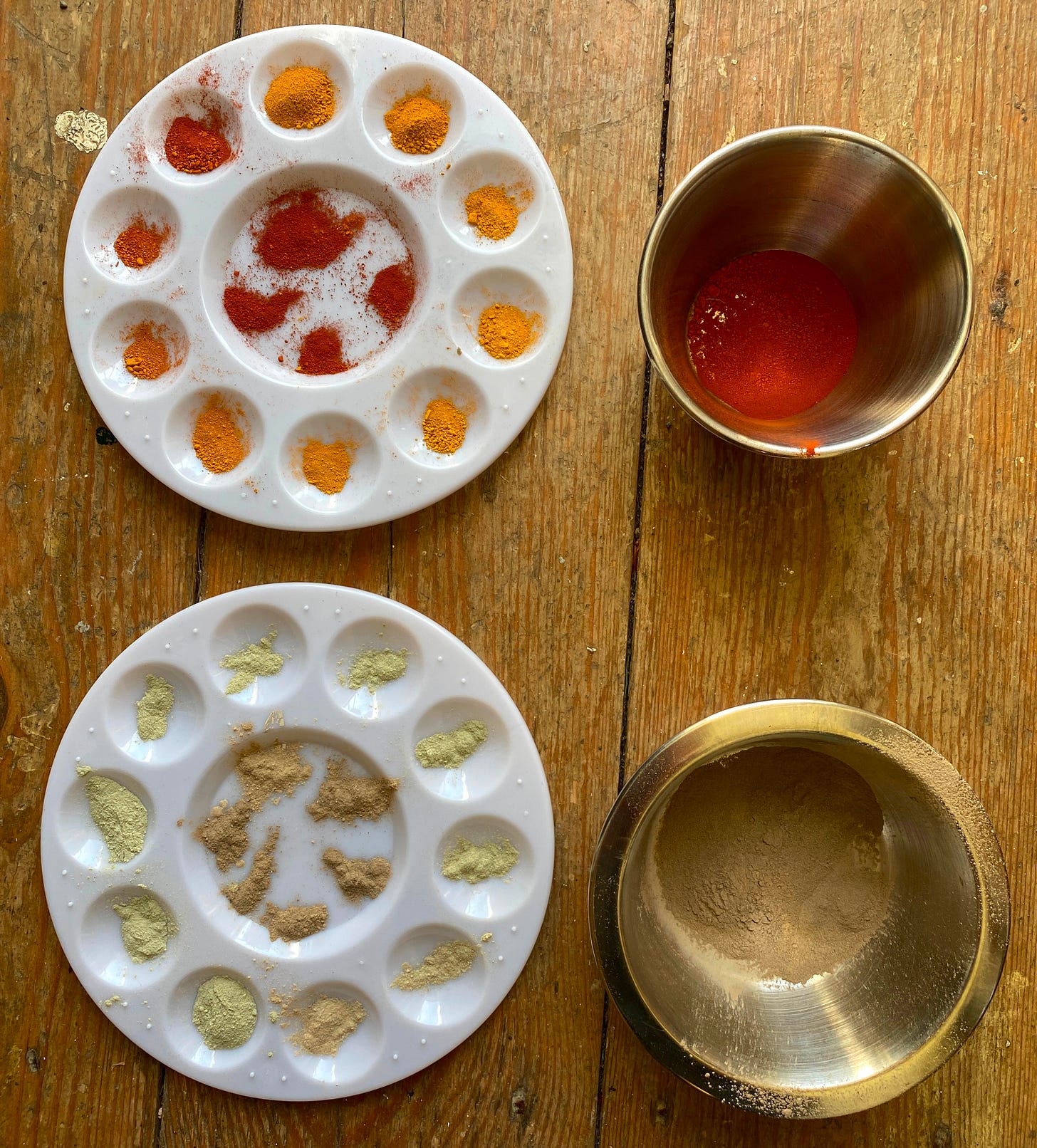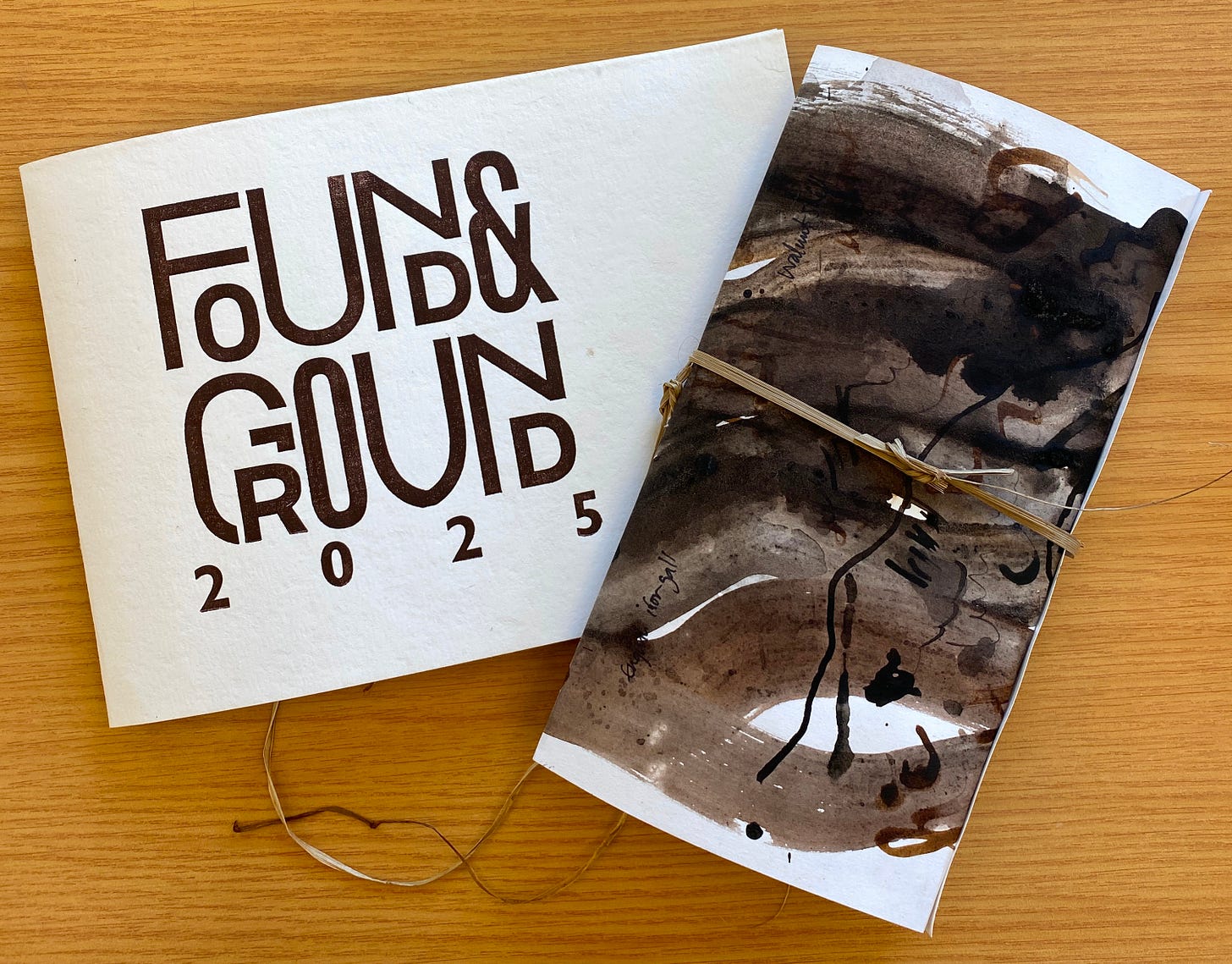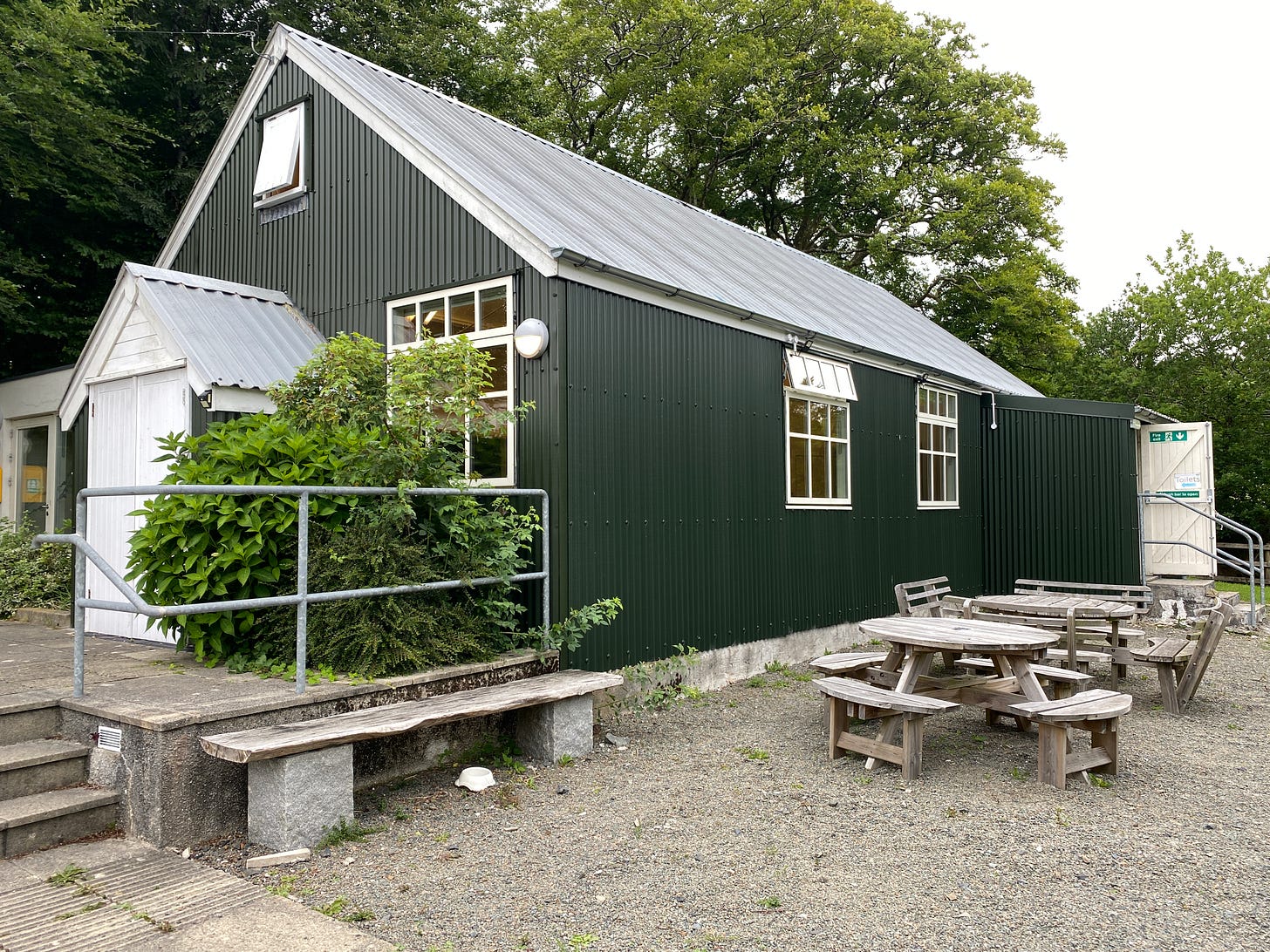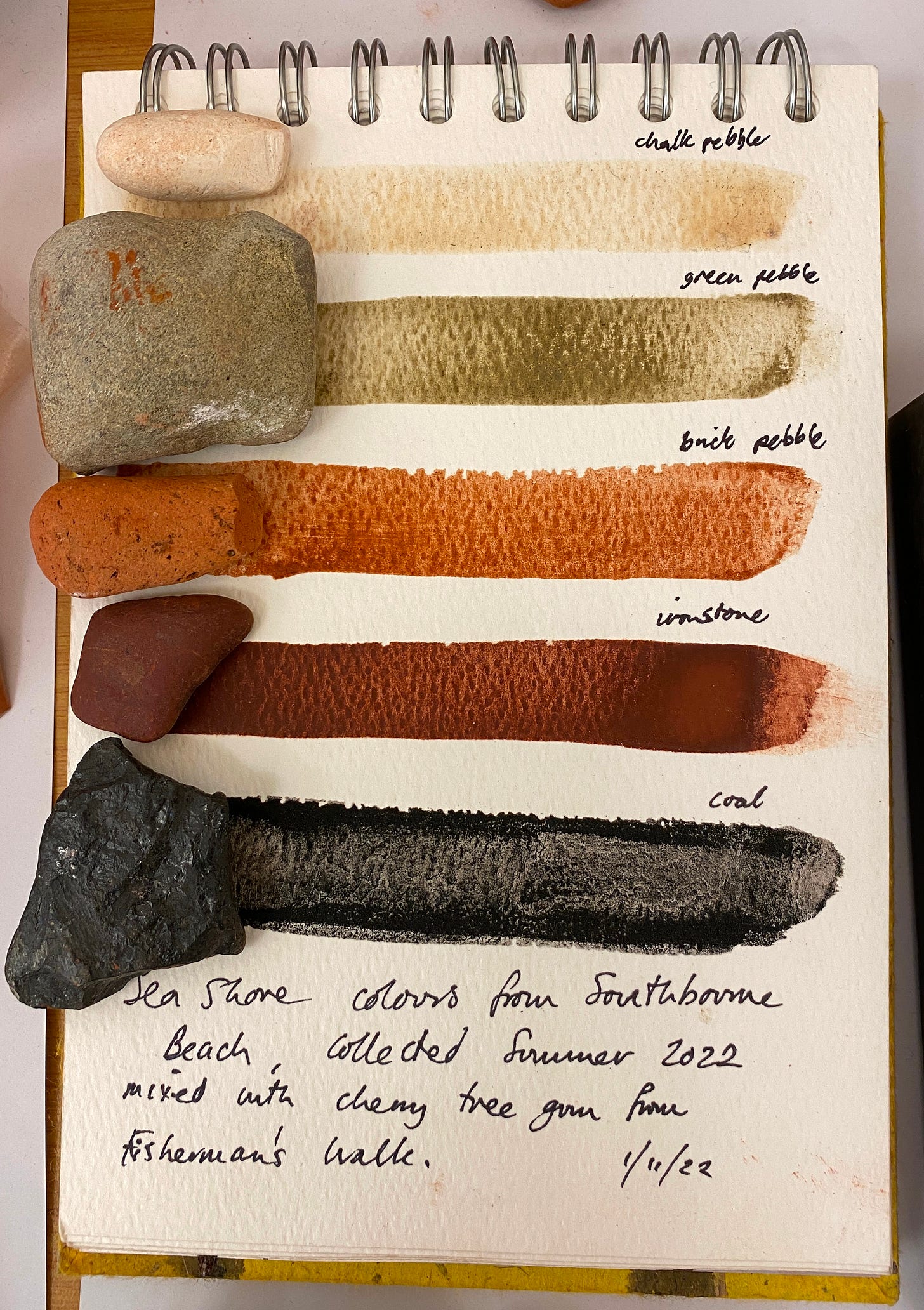This week here’s a peek into my teaching practice, as I have been away in Dartmoor teaching the 5-day Found and Ground natural art materials course for the fourth consecutive year. It’s an immersive time for both me and the students, smashing galls, testing rocks, refining pigments, mixing paints, making sketchbooks, brewing inks and rolling pastels. Meanwhile, behind the scenes, I am attending to making sure everything flows.

As you can imagine, I could do with a couple of days to recover and a few days off, as it’s by far my biggest work week of the year. Last week saw a double length essay and voiceover and this week I have some beautiful images for you, so I don’t feel too bad offering you some simple goodness from a week in community with earth, people and creativity.

1 The week was organised by Flora of Plants and Colour, my regular host for online teaching. I was so sad last year that Schumacher College had to close at its Dartington site2, where I had taught for 3 years, with my own courses, ones with the Engaged Ecology MA department and with
. However, Brentor village hall made for a really accessible, less expensive week and a real community feeling. I have often lived in areas where I have hired community or village halls for arts and music events, T’ai Chi workshops and ceilidhs, so it felt like a return to roots.My amazing assistant was Lucy Mayes of London Pigment, a pigment making expert who pretty much singlehandedly got pigment making on the Heritage Craft list. It was a joy to have someone quite so experienced on the team, indeed, much more experienced than me with lake pigments. She is about to publish a beautiful book on natural pigments full of in-depth science, stories, history and detailed images, which is most definitely this week’s good thing. You can pre-order it here.
I brought the most equipment and pigments I have ever taken anywhere, and thanks to a generous lift from a participant, I was able to cover the tables with rocks from near and far, including these from the end of my road. I wanted people to know they don’t need to live in a rural idyll to find interesting colour sources.
The geology of Dartmoor is incredible and will certainly play a bigger part of the course next year, with another visit from Josephine M Collingwood, a local writer, photographer and geologist. Josephine arrived in the hall on the last day, as if by magic at the exact moment I was explaining the copper mineral and famous green pigment, malachite. Lucy captured the moment below.
Josephine swooped in with an astounding example of the mineral and then as I said ‘it is sometimes found with native copper’, placed a polished piece of copper and malachite on the table in front of me, to my and the students’ delight. New connections have been made, and adding geological and letterpress visits to future courses is now a plan. The follow up ‘level two’ Drawn From the Wild course will debut next year, featuring semi-precious mineral colours amongst many other things, so it’s apt.
It is time to catch a train to go and see my family and partner. Warmest greetings to you from my desk, before I put ‘out of office’ on for some time away camping in a forest and reading Ted Chiang. See you next week with something like a proper post.
Sketchbook cover was printed by Emma of wonderful Princetown Press, Dartmoor.
But it does continue as Schumacher Wild.












I am a bit jealous, I'll admit. This is so, so beautiful.
Such beautiful colours! I used to run courses in village halls also (Putting the Fun back into Funeral, amongst others), they are wonderful, humble spaces. Good rest ye, Caro.